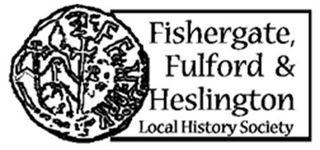
Fishergate: 40 years of excavations Lucy Johnson and Ian Milsted
Event details
What did Fishergate mean to the Romans? What was the nature of the settlement before and after the Norman Conquest?
Three churches and a Gilbertine Priory were all were closed by Henry VIII and the area remained mostly undeveloped until Castle Mills Lock and the Glassworks were built.
Lucy Johnson and Ian Milsted of York Archaeology will show how three important archaeological investigations have illuminated our understanding of the people who lived, worked and worshipped in Fishergate for 2,000 years.
In 1985, a large Anglian trading and manufacturing settlement was discovered on part of the former glassworks, along with St Andrew’s church and a Gilbertine Priory. Then in 2001, part of a Roman cemetery and further evidence of Anglian activity was found adjacent to Blue Bridge Lane. At Fishergate House, a large medieval graveyard from the lost church of St Helen was discovered.
York Archaeology's 2023 excavations at the Rialto gave a unique opportunity to reappraise these previous investigations and significantly add to our understanding of the history of Fishergate and its relationship with the city.
What new information can scientific analysis bring to our understanding of the area? Come along and find out.
Find out more about the Fishergate, Fulford and Heslington Local History Society.
Photo credit: YAT model of St Andrew’s Priory
Payment is at the door, but please book in advance. Email ffhyork.localhistory@gmail.com or text/call 07914 426744.
About the speakers
Lucy Johnson is a Project Officer at York Archaeology and was Site Manager at the 2023 Rialto investigations. She has worked in commercial archaeology for the past eight years on projects across the country. Her particular research interest is the Anglian period in York.
Ian Milsted is Head of Community Engagement at York Archaeology. Ian is from Orkney, but has lived in England 20 years. As a Field Officer at York Archaeology, he has worked extensively in York including directing recent excavations at York Minster. His particular interest is the transition from the Roman to the early medieval period.
Partners

